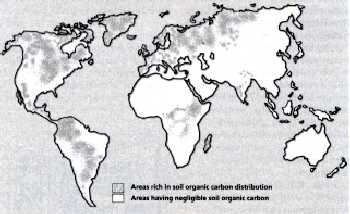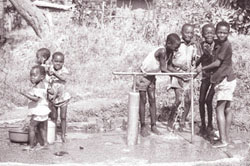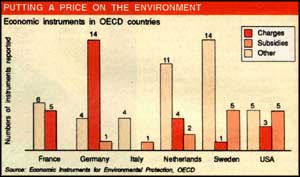Agriculture: Don't fix is the government's fix
It can be said that Union budget, 2007, is high on symbolism and intent. Most people in and close to power acknowledge that something is spoiling booming India s party price rise, agricultural
It can be said that Union budget, 2007, is high on symbolism and intent. Most people in and close to power acknowledge that something is spoiling booming India s party price rise, agricultural
Finance Minister P. Chidambaram's initiative is a major step in recognising the country's debt to farm families but much more needs to be done. Finance Minister P. Chidambaram's budget 2008-09 has aroused widespread interest in methods of saving our small and marginal farming families from indebtedness and acute economic distress, which lead to occasional suicides. The steps proposed in the budget will give relief to nearly four crore farmers, at an estimated outlay of Rs.60,000 crore. As stressed by Mr. Chidambaram, this is a major step in recognising the indebtedness of the country to farm families who, th rough their toil in sun and rain, are safeguarding national food security and sovereignty. The question arises whether this step will mark the end of farmers' dependence on moneylenders and traders for their credit needs. Some of the following issues need consideration: First, the definition of small and marginal farmers has to be different for irrigated and dry farming areas. The present definition classifies marginal farmers as those owning up to 1 hectare and small farmers as those owning 1-2 hectares. Farmers cultivating crops in rainfed, arid, and semi-arid areas may own 4-5 hectares but their income is uncertain and their agricultural destiny is bound closely to the behaviour of the monsoon. A large number of farming families affected by the agrarian crisis in Vidharbha fall under this category. They will not be eligible for debt waiver and debt relief under the present scheme. A second problem relates to the source from which loans have been taken. The programme announced in the budget covers farmers who have taken loans from scheduled commercial banks, regional rural banks, and cooperative credit institutions. It does not cover farmers indebted to moneylenders and traders. According to the National Sample Survey Organisation (NSSO), 48.6 per cent of the farm households surveyed were indebted; of these 61 per cent had operational holdings below 1 hectare. Of the total outstanding debt, 41.6 per cent was taken for purposes other than farm-related activities, such as healthcare and domestic needs; 57.7 per cent of the outstanding amount was sourced from institutional channels and 42.3 per cent from moneylenders, traders, relatives, and friends. It has been estimated that in 2003, non-institutional debt accounted for Rs.48,000 crore; and out of this, Rs.18,000 crore was at an interest of 30 per cent per annum or more (NSSO 59th Round cited by the Economic Survey 2007-08). The Expert Group on Agriculture Indebtedness chaired by Professor R. Radhakrishna has recommended, in its report of July 2007, the inclusion of the financially excluded, particularly the small borrower households, and the adoption of risk-mitigating measures for agriculture. The concept of financial inclusion is in its early stages of operationalisation. Loan waiver is the price we have to pay for the neglect of rural India during the past several decades, as reflected in a gradual decline in investment in key sectors like irrigation, post-harvest technology (even today, farmers dry the harvested paddy on roads), market, and communication. The four crore farmers who are to be relieved of their debt burden before the end of June 2008 will become eligible once again for institutional credit for their cultivation expenses during kharif 2008. The challenge now is to prevent them from getting into the debt trap again. For this purpose, both Central and State governments should set up immediately an Indebted Farmers' Support Consortium at the district level. This should comprise farm scientists, panchayati raj leaders, input supply agencies, representatives of relevant government departments and financial institutions, rural and women's universities and home science colleges, private sector and media representatives, and others relevant to assisting the farmers relieved of their past debt in improving the productivity and profitability of their farms in an environmentally sustainable manner. This is essential for enabling them to have a higher marketable surplus and thereby more cash income. The smaller the farm, the greater is the need for marketable surplus to avoid indebtedness. Such an Indebted Farmers' Support Consortium should get the four crore farmers the benefits of all the government schemes such as the Rashtriya Krishi Vikas Yojana, the National Food Security Mission, the Accelerated Irrigation Benefit Programme, the National Horticulture Mission, Rural Godown and Warehousing Schemes, and the National Rural Health Mission. If this is done, every farm family released from the debt trap should be able to produce at least an additional half tonne per hectare of food grains or other farm produce. This should help increase food production by about 20 million tonnes during 2008-10. At a time when global and national food stocks are dwindling and prices are rising, this will be an extremely timely gain for our national food and nutrition security system and for the control of inflation. We should ensure that the outcome of debt waiver is enhanced farmers' income and production. The prevailing gap between potential and actual yields in the crops of rainfed areas such as jowar, bajra, millets, pulses, and oilseeds is over 200 per cent even with the technologies on the shelf. The restarting of the agricultural career of four crore resource-poor farmers through loan waiver could mark a new dawn in both agrarian prosperity and national food sovereignty
<p><strong>What you measure determines policy</strong></p> <p>Another round of the annual climate meetings is going to take place and the most ambitious outcome will be limited negotiations on some elements,
<p style="line-height: 22px; font-size: 14px; margin-top: 5px; color: rgb(0, 0, 0); font-family: Arial, Helvetica, sans-serif;"><em>Fuel price reform is inevitable and necessary, but clean fuel and public
<p align="center"><img alt="" src="http://www.indiaenvironmentportal.org.in/media/iep/homepage/msanwal_blog.jpg" style="width: 605px; height: 118px; float: left;" /></p> <p align="center"> </p>

For more than a century, the people of Motepur used to build an earthen dam on the Punpun river every two years. Today, wage labour has replaced voluntary service and a cement dam threatens to blot out a unique water harvesting system.
After 20 years of scepticism, increasing sales have finally convinced industries that genetic engineering holds the key to the future.

A non conventional energy complex set up in Brahampur village lies in a shambles today because authorities disregarded the people's requirements

By maintaining terrestrial forestation to improve the soils, drylands can be saved from being further degraded

After supporting India's forestry programmes for almost two decades, the World Bank now is moving toward arrogating to itself governance of the country's forests.

The benefits of a watershed develqpment programme in Anantapur fail to trickle down to poor farmers

MY INITIAL response is on the tenor of the article, that foresters are responsible for the mismanagement and degradation of forests. I feel that India continues to have forested areas only

The demand for water and energy is likely to increase at a geometrical rate in the coming years. What are the policy options for a better management of these resources?

A large number of "economic instruments" are already being used in industrialised countries, according to a recent survey conducted by J B Opschoor of the Free University of Amsterdam. These economic instruments can be classified into five types: charges,

Delhi, reduced to a gas chamber due to the proliferation of highly polluting industries, now requires the social and political will to enforce an effective relocation
<p><img alt="" src="http://indiaenvironmentportal.org.in/media/iep/homepage/msanwal_blog.jpg" style="width: 600px; height: 117px; float: left; margin: 14px;" /></p> <p> </p> <p><strong><em>Mukul
IT IS indeed unfortunate that the two Constitutional amendment bills to strengthen Panchayati Raj institutions and urban municipalities have received little public attention. Political

Destroying mosquito larvae with the help of fish is not only environment frinedly, but a profitable venture too

With the discovery that not all four anopheles mosquitoes transmit malaria, programmes to control the disease need fresh appraisal

The government is on the wrong track and it's infected blood, not sexual intercourse, which transmits AIDS in the country